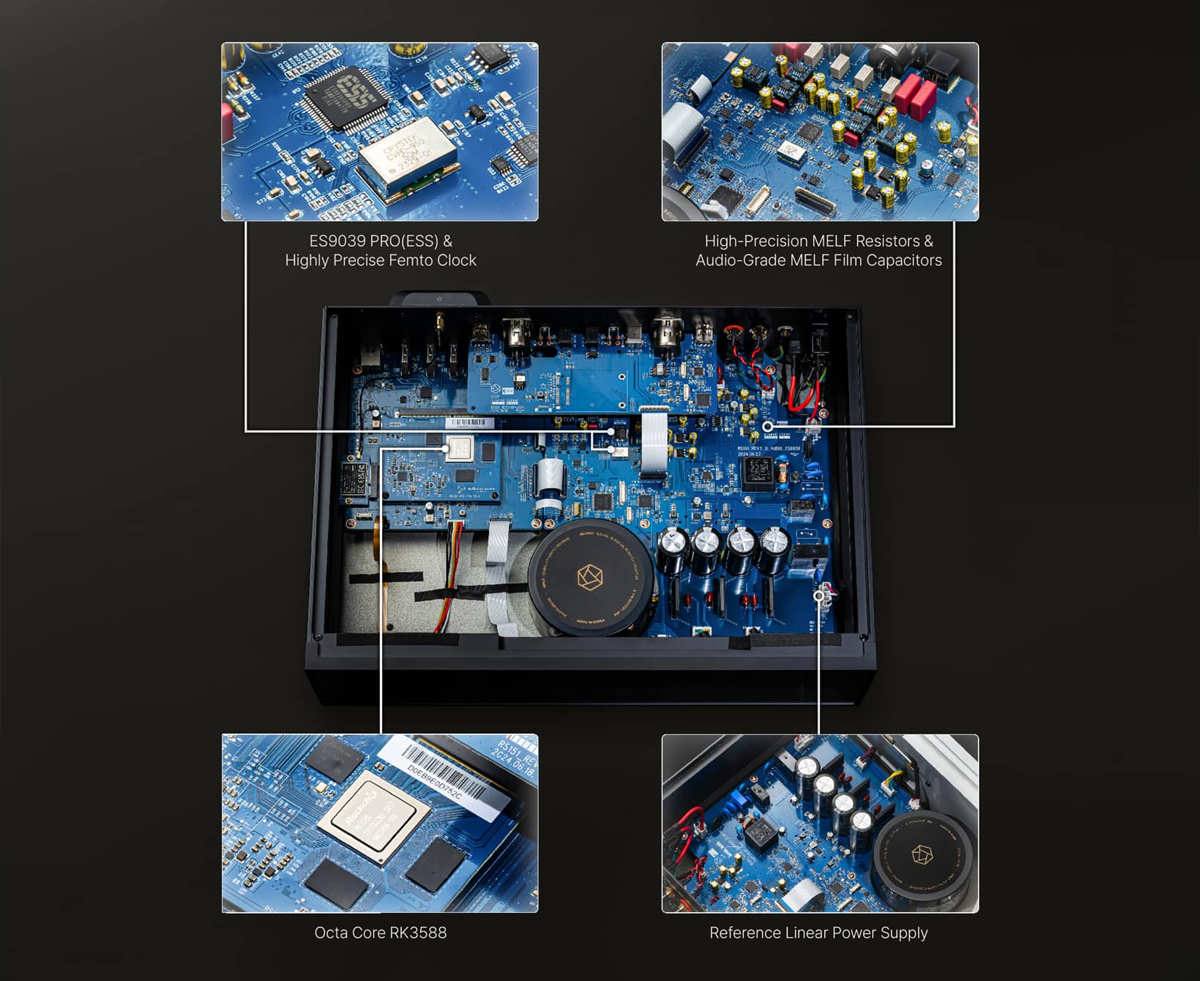HiFi Rose announces the new RS151 reference-level networked audio streamer.
The HiFi Rose RS150 network streamer has been the cornerstone of the Korean brand—until now—thanks to its extensive feature set, striking industrial-style design, and high-quality sound performance. Now, the company confidently states that the RS151 is a network streamer that boasts groundbreaking improvements in every aspect!
The HiFi Rose RS151 boasts a full HD 15.4-inch touch screen within a sturdy aluminium chassis, it promises to be a high-end streamer and a high-quality DAC for any other digital sources you may have. Loaded with ROSE OS, it also uses Rose's Digital Processing Core (DPC) Module, which was initially developed for the RD160 DAC. This module precisely synchronises any digital signal the DAC receives with a high-precision Femto clock as an I2S signal. It applies clock synchronisation and locking processes to minimise jitter*. We're told that isolating this module away from the wider CPU circuitry eliminates signal distortion and interference generated within the unit from the digital audio path.
*Jitter refers to small time fluctuations or variations in the timing of a signal, especially in digital signals. Instead of the signal being transmitted at regular intervals, there is slight instability in the positioning of the pulses, which can lead to errors or distortion during the reproduction or transmission of the signal. In audio systems and digital transmission, jitter can affect sound quality, as signals may arrive at the wrong time and cause irregular playback, especially in systems that rely on precise timing synchronization, such as digital-to-analog converters (DACs). To prevent or minimize jitter, high-precision timing systems or technologies for correcting timing errors are used.
The RS151's DAC design is based on the ES9039PRO DAC chip with fourth-generation Hyperstream technology. Here, the digital and analogue signal paths are entirely separated, ensuring that each circuit operates independently and with reduced interference. The new streamer also benefits from the ROSE Audio Engine. This in-house development is said to ensure all digital audio is delivered to the DAC without loss for precise signal processing. The upgraded 8-Core CPU used in the RS151 boasts four times the data processing performance and eight times the graphics performance of anything else in the current Rose range.
The DAC stage, I/V conversion circuit and the Op-Amp stage feature high-precision MELF resistors and WIMA film capacitors, which are used for improved linearity and minimised distortion. Meanwhile, a single-point ground design reduces grounding loops and suppresses noise and interference. According to the manufacturer, the advanced power supply design strengthens power stability and filters out high-frequency noise.
The RS151's analogue stage employs the Noise Reduction Analog (NRA) filter, which the company designed to further eliminate noise and deliver an extremely flat response across the frequency spectrum—even in the lower ranges. The Android-based ROSE OS supports local network music playback within Rose's Music app and CD playback and ripping via a connected optical drive. Moreover, it supports Internet radio, Spotify Connect, Tidal, Qobuz and Apple Music. The RS151 is also Roon Ready and Plays with Audirvāna certified. Additionally, the operating system offers video playback support, locally or within the Tidal or Rose Tube apps.
Connectivity is wide-ranging and includes HDMI eARC, Hi-Res Coax, AES/EBU and USB inputs and outputs, Optical inputs and outputs, I2S output, and analogue line input, making it easy to integrate into almost any audio system. There's also a new external Bluetooth module and antenna, supporting Bluetooth v5.4 via an advanced Qualcomm chipset, for premium wireless audio playback from a connected device. The RS151's chassis is crafted from aluminium plates up to 30mm thick, CNC-machined for effective heat dissipation, ensuring stable performance even during extended use. Its minimal assembly joints enhance structural rigidity, effectively suppressing vibrations. The result is an ideal chassis with an appealing aesthetic.
AthensProAudio Team ©
















